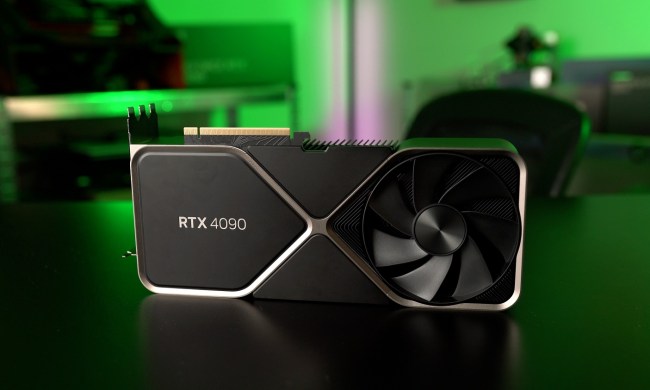Amidst rumors that AMD may be leveraging GDDR6 memory for its next-generation of graphics cards due to high bandwidth memory two (HBM2) supply issues, Nvidia has announced that it utilizes as much as 12GB on each of its new Nvidia Titan V graphics cards. The new card pairs that up with the same Volta graphics processor as its professional counterpart and has a price tag as high as $3,000.
Although AMD put up a solid fight with its RX Vega range of graphics cards this year, they were nowhere near as successful at taking on the competition as its Ryzen CPUs were. That’s perhaps why we’ve seen mostly refreshes and tweaked versions of Nvidia’s successful 10-series Pascal cards in 2017. The Titan V however, is absolutely a next-generation graphics card.
Alongside the 12GB of HBM2 memory the Titan V utilizes the GV100 graphics core — the same one found in the $10,000 Tesla V100 enterprise card. Although it sports a lower boosted clock speed than the Titan XP (1,455Mhz vs. 1,582Mhz) its huge memory bus-width of 3,072-bit means it has a near 20-percent improvement in memory bandwidth (653GBps vs. 547GBps). Its single precision floating point power is noticeably higher, too, at 13.8 TFLOPS vs. 12.1 TFLOPS.
Although technically considered part of the Geforce 20-series range, the Titan V is very much a business-focused graphics card. It has much more in common with the Tesla V100 that it shares a core with, than with high-end consumer graphics cards.
Alongside the $3,000 price point which puts it out of range of even some of the deepest of consumer pockets, this card sports the same 21.1 billion transistor count as that data center graphics processor (GPU). It’s also built on the same 12nm process and has the same number of CUDA and Tensor cores: 5,120 and 640 respectively, as per Anandtech.
Although comparable, this card is far cheaper, and it’s incredibly capable, especially when it comes to computational tasks like powering artificial intelligence. Indeed Nvidia promises free access to its Nvidia GPU cloud with every purchase. The big difference is that this card works in a standard PC, so is much more versatile than some of its data center counterparts.
Considering this card is aimed at the professional market and Nvidia doesn’t typically open its new graphics generations with its most powerful entry, this card probably isn’t a great indication of what we can expect from Volta as a whole. Regardless, it’s still an impressive piece of equipment and continues to remind us that as powerful as is what came before, there will always be something new on the horizon to push the boundaries of what’s possible.
The Titan V is available now, priced at $3,000.




